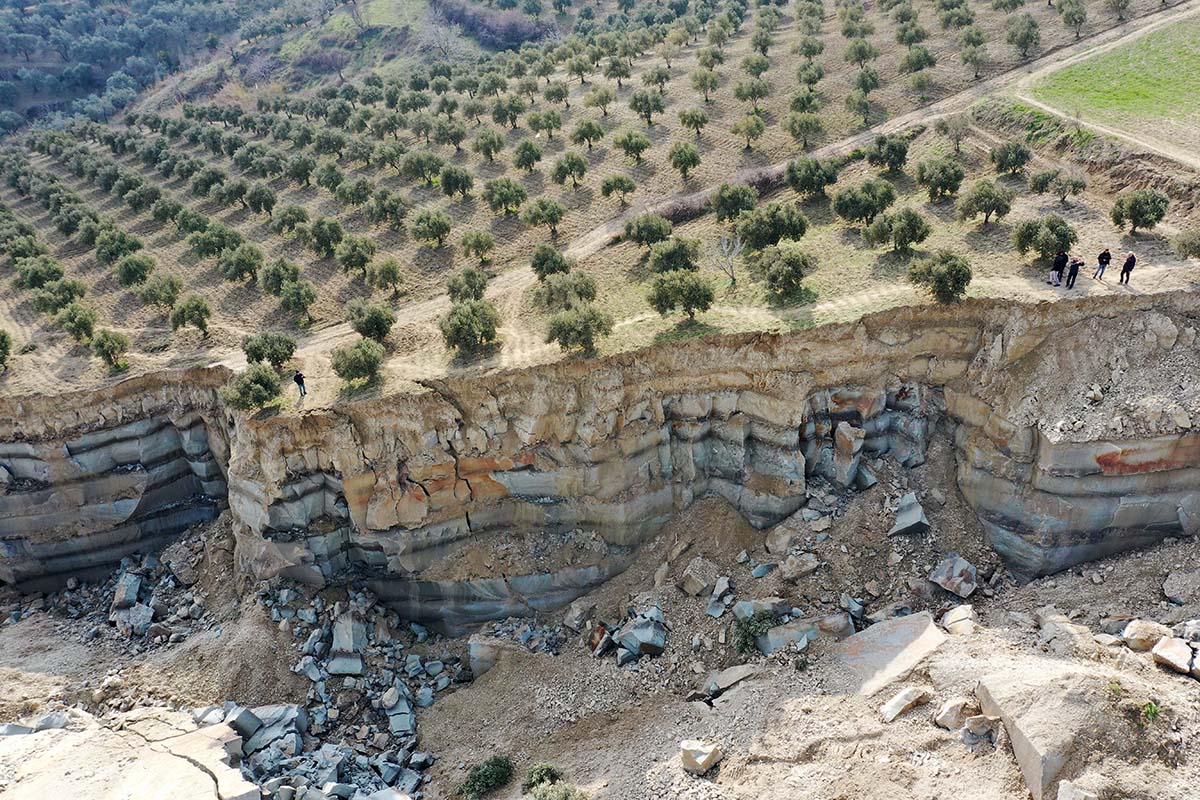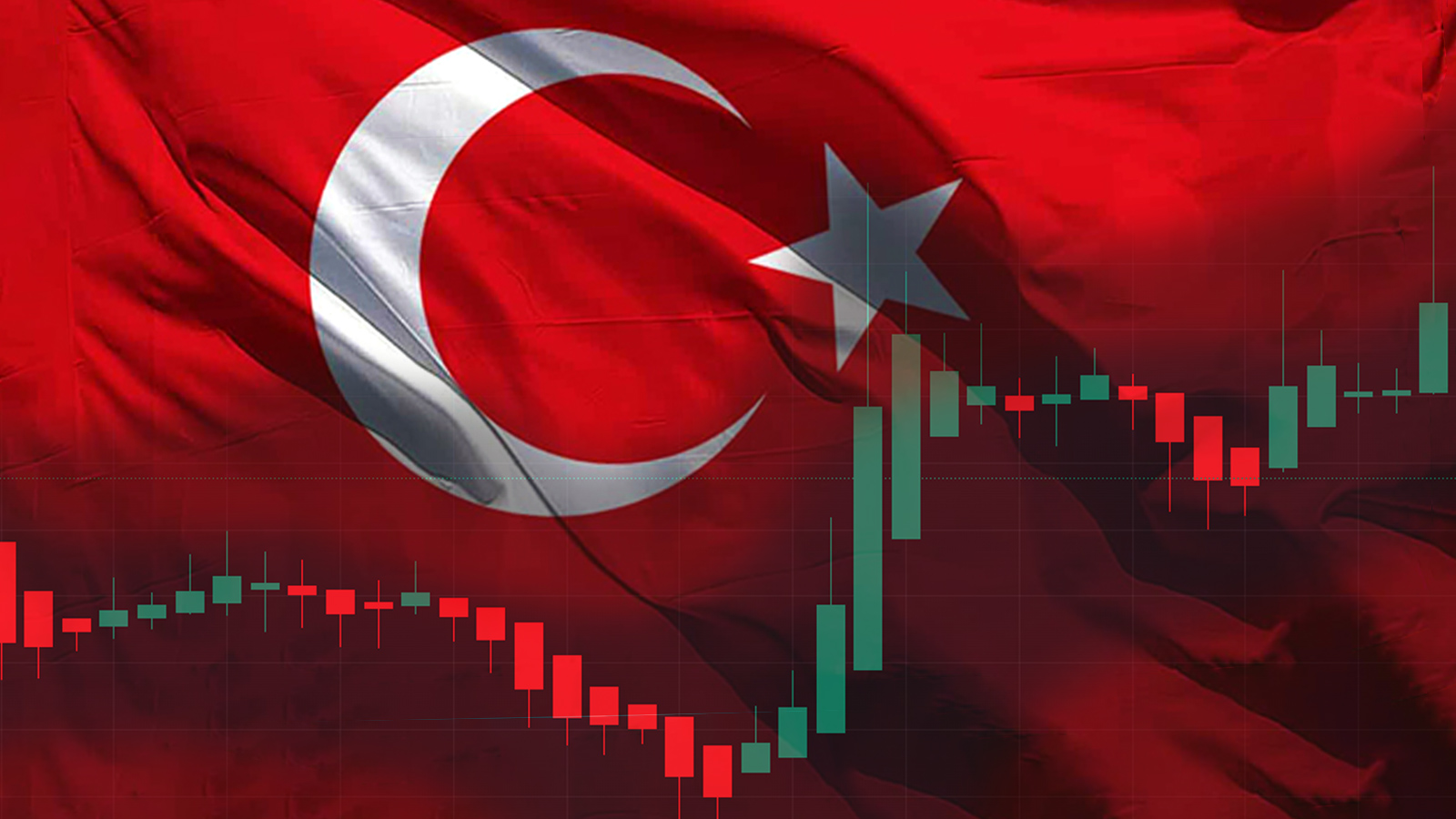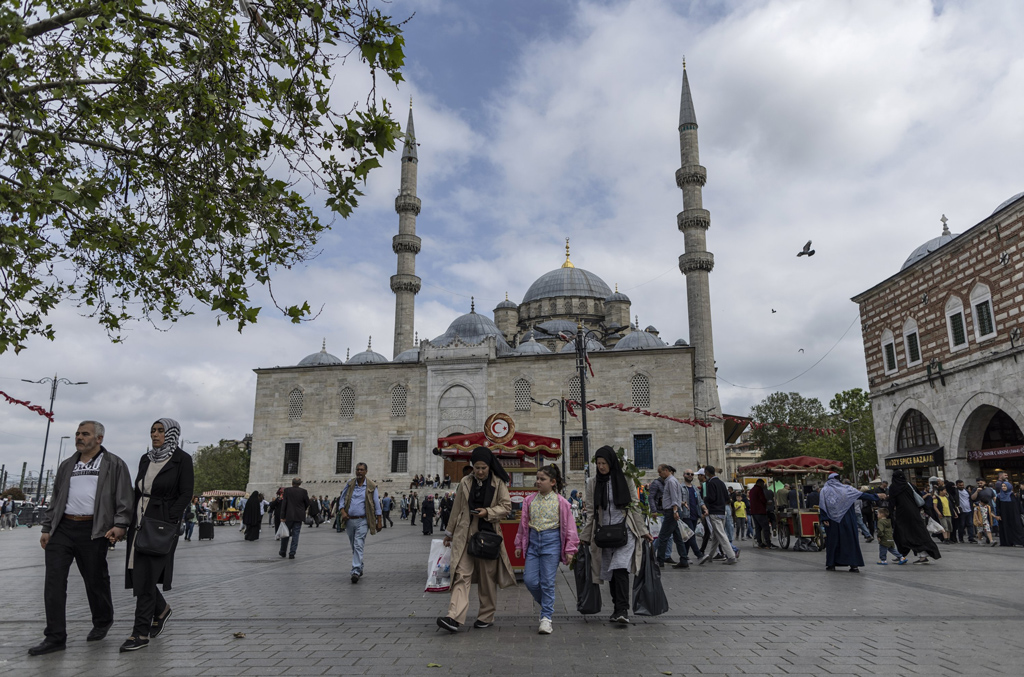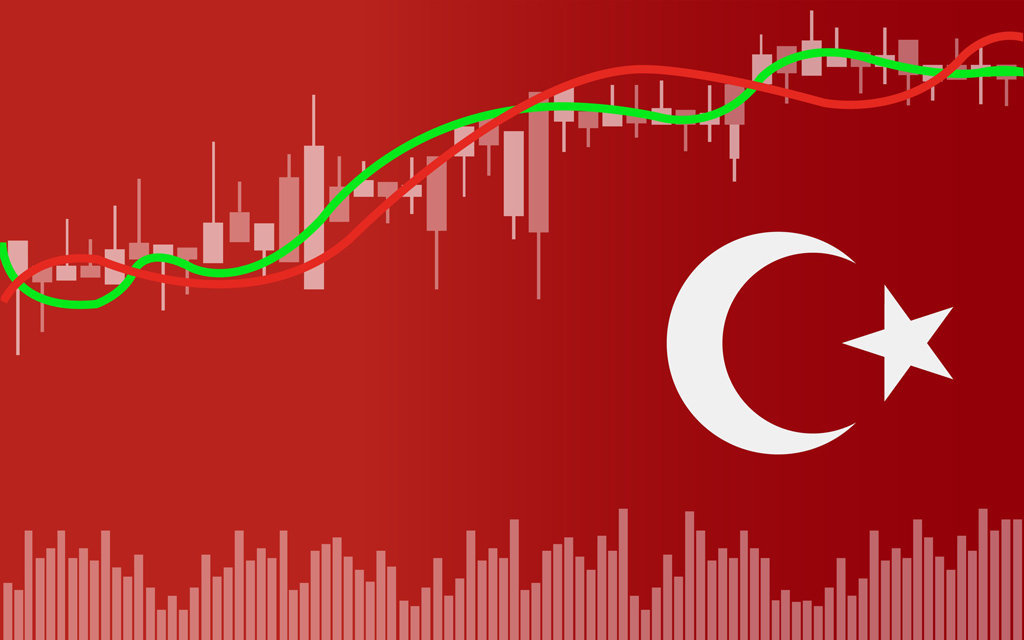In the wake of the great disaster that Türkiye has experienced, we are trying to heal each other’s wounds, mitigate each other’s suffering and rush to each other’s aid as a nation. We are compelled to highlight the economic impact of what happened in the devastation’s immediate aftermath while our memories and pain are still fresh. It is necessary to state and acknowledge that any attempt to restore and improve the “living standards” of Turkish citizens must rest on this assessment within the framework of the basic idea that the economy is supposed to serve the people. Universally speaking, economics is the science of allocating scarce resources optimally and we need its accumulated experience and principles more than ever amid crises.
Economists view any development that differs from what is “normal” or “routine” as a crisis – even though the nature of such developments may vary. To address such atypical situations, they turn to a discipline and set of approaches called crisis management. It is also important to recall that earthquakes fall within the category of “force majeure” in economic terms and may require measures like a “state of emergency” due to our inability to control them.
In terms of crisis management, the immediate aftermath of an extraordinary development corresponds to the stage of “first and emergency response.” Eventually, that stage gives way to the “first general assessment of loss and damage” as experts attempt to take advantage of their technical experience, including situational analysis, to produce a general picture – a first inventory. Those rough findings, which are not expected to be precise nor completely accurate, derive their value and function primarily from their ability to guide more advanced studies and the strategy or policy that is expected to be developed over time. In other words, immediately after the “emergency response” phase, the aforementioned initial assessment is made as a “necessary condition” for active and successful crisis management yet it does not amount to a “sufficient condition.” It is in this general context that we are compelled to share our initial assessment and findings regarding the disaster’s economic impact.
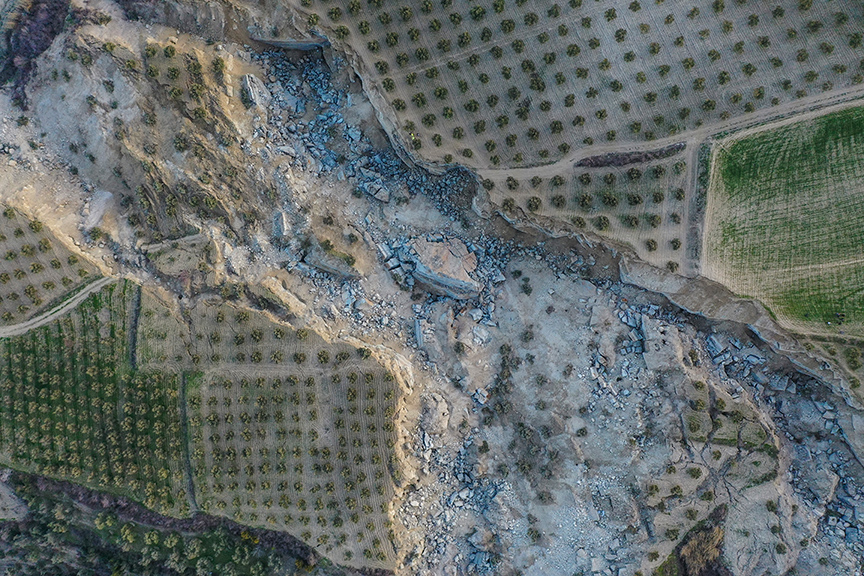

[caption id="attachment_18028" align="aligncenter" width="864"]

The crack that occurred in the olive grove in the rural Tepehan District after the earthquakes in Pazarcık and Elbistan districts of Kahramanmaraş was among the most prominent symbols of the seriousness of the "disaster of the century".
With the effect of the earthquakes, a 200-meter-wide, 400-meter-long and 50-meter-deep rift was formed in the 12-decare olive grove. The region, where the valley image emerged after the earthquake, is visited by local and foreign scientists as well as those who are curious about the destruction of the earthquake. ( Photo credit: OÄźuz Yeter / Anadolu Agency)[/caption]
The earthquake zone covers 11 Turkish provinces with a total population of approximately 15 million and nearly 4 million buildings. It is obviously necessary to separate the loss of life in this part of the country, which is home to one-fifth of the total population, from all kinds of quantitative assessments. At this point, we must refrain from subjecting the lives lost to technical approaches like life expectancy, which serve as points of reference for life insurance and damage claims.
The Region Generates More Than 10 Percent of Türkiye’s GDP
The earthquake-stricken provinces are immensely capable of generating added value and account for more than 10 percent of Türkiye’s gross domestic product and economic growth. It is also important to recall that approximately 8 percent of all taxes come from the affected region.
Those cities account for approximately 11 percent of the country’s exports. Specifically, their share of services is lower (7 percent), industrial exports are average (11 percent) and agricultural exports are higher (20 percent).
Thirty-six out of Türkiye 272 active organized industrial zones are in the relevant area, where they create jobs for 350,000 people. Indeed, the Istanbul Chamber of Industry’s (ICI) list of top 500 companies – which identifies the national economy’s “engine” – includes 69 enterprises from the disaster zone. Moreover, there are 82 companies among the second 500 firms in the ICI list – bringing the total number to 151. In this context, one-sixth of all food producers in Türkiye, which is known for its contributions to food production and exports, happen to be in the quake zone. Experts believe that the region’s production capacity accounts for nearly 12 percent of all active and properly insured employees in the country.
The Region Generates 15 Percent of Added Value in Agriculture
A closer look at Türkiye’s potential farming areas reveals more clearly the earthquake-stricken area’s agricultural significance. Specifically, 15 percent of all vegetable production, 25 percent of all fruit orchards, 16 percent of grains and other produce products and 15 percent of farming land happens to be in the relevant provinces. In sector-specific terms, this region generates 15 percent of all added value. Accordingly, thanks to their agricultural capacity, those 11 provinces wield enough economic power to represent one-fifth of Türkiye’s total agricultural exports.
In terms of the energy supply and facilities, which are crucial for all kinds of production, the earthquake-affected provinces are home to 43 dams and hydroelectric power plants.
Last but not least, it is necessary to include banking and loans in this initial assessment – which is intended to form the basis of more advanced studies. Legal citizens in the disaster zone represent 7 percent of all savings and 10 percent of all loans in Türkiye. It is possible to reach more specific conclusions by focusing on institutional loans and individual sectors. For example, the textile and textile products sector in this region takes out more than 40 percent of all relevant loans in the country. Furthermore, 12 percent of all loans, which banks have started tracking nationwide, happen to be in the disaster zone.
A more detailed assessment of lost and damaged property in the relevant provinces, where there are close to 4 million buildings, shall reveal the true loss of wealth and, by extension, the potential cost of rebuilding and reconstruction. In terms of national income, any “cost” expenditure would make a positive impact on income and future economic growth. In other words, the losses and damage that the region has suffered tend to impact growth negatively – whereas any amount spent for rebuilding or repairing collapsed or damaged buildings would increase the national income and spur economic growth. It is important to note that we highlight a fact that is based on “direct impact” and “machine accounting.”
The impact of any disaster, including earthquakes, is initially calculated by focusing on losses in terms of devastation and damage and with the help of some algorithms and models whose validity depends on various assumptions. One must note that those studies and models, which rest firmly on econometrics, tend to be more accurate and useful. It is not possible for any real short-term analysis – let alone medium- and long-term assessments – to be conducted properly until the disaster’s terrible impact wears off. Nonetheless, it is important not to lose valuable time to make an assessment based on a general and initial analysis to create a framework.
At this point, it is necessary to draw the reader’s attention to one of the few studies on the relevant subject. The Vienna-based Center for International Economic Research (FIW) created a model of the changing economic indicators of all areas that experienced earthquakes between 1973 and 2015. According to that study, the average earthquake lowered the relevant country’s national income by 1.6 percent over the following eight years. Specifically, low- and medium-income countries suffered longer-term damage, as high-income nations experienced certain positive outcomes as a result of reconstruction. That study by Stephanie Lackner also concluded that decisions to spend in the immediate aftermath of earthquakes may be divided into three categories: “poorly planned,” “dominated by political preferences,” and “ad-hoc characteristics,”
TĂĽrkiye Expected to Grow by 2.6-3 Percent in 2023
In the immediate aftermath of the Marmara earthquake in 1999, Türkiye’s State Planning Organization (
Devlet Planlama Teşkilatı, or DPT) conducted a study whose broad scope and solid methodology enabled it to inform all regulations in the relevant field. That study concluded that the country’s gross domestic product had decreased by 0.7 percent over five months after the August 17, 1999 earthquake. Around the same time, the Turkish Industry and Business Association (
Türk Sanayiciler ve İş İnsanları Derneği, or TÜSİAD) and the World Bank supported and commissioned two additional studies, which posited that the earthquake’s “cost” corresponded to approximately 1.2 percent of Türkiye’s gross domestic product. Indeed, the Turkish Enterprise and Business Confederation (
Türkiye Girişim ve İş Dünyası Konfederasyonu, or Türkonfed – which is linked to TÜSİAD) updated its initial quantitative findings based on that same model after the February 6, 2023 earthquake to conclude that the disaster’s price tag amounted to more than $80 billion. Meanwhile, another report updated a study of the 2011 earthquake in Van through rescaling and weighting to project a 12 percent real decrease in the 11 earthquake-stricken provinces. Based on that conclusion, it is possible to argue that Türkiye’s gross domestic product would plummet by approximately 1.1 percent. However, even if one were to take into consideration the World Bank’s existing pledge of $1.78 billion alone, it would be more realistic to use a correction factor of 50 percent in predictions about the Turkish economy’s growth. It is also possible to reach various conclusions based on the market expectation of 3.6 percent – which the central bank survey documented but has become highly optimistic under the current circumstances – and various other studies. Indeed,
any analysis that takes into account the loss of wealth and cycles of rebuilding and reconstruction would project that the Turkish economy will grow by 2.6-3 percent in 2023. The widely held view is that construction will increase over the next months, mitigating the destructive effects experienced by infrastructure and supply. It is also important to flag a renowned investment bank’s prediction that the disaster’s impact on growth will be postponed to the long term as long as the country preserves its capacity to organize relief and reconstruction efforts.
Undoubtedly
, another issue that must be taken into account together with any long-term impact analysis and economic growth projection is the necessary expenditure and the “price tag” of the earthquakes. Multiple studies have already concluded that the public administration’s potential short-term expenses will amount to approximately 2.5 percent of Türkiye’s gross domestic product. That share is expected to reach approximately 5 percent in the middle run. In this sense, the country needs an estimated $25 billion to $50 billion. It is possible to observe that alternative approaches (which are limited in numbers) focus on multiple parameters including “rubble removal,” “food and accommodation costs,” “cash assistance,” “infrastructure repairs,” “residential repairs,” and “the construction of new housing units.” More advanced and comprehensive assessments, in contrast, take into account additional costs like “lost taxes” and “export disruptions.” In this context, it would be more appropriate to act cautiously and wait for trends vis-à -vis various parameters to mature. Notwithstanding, the post-disaster conditions, starting with the reflationist impact of such expenditure, will obviously fuel inflation and make it more difficult to combat it.
One cannot rule out that any rushed attempt to identify details (beyond initial and priority assessments) and quantify what happened in the disaster’s immediate aftermath may hinder, as opposed to assist, attempts to reach key goals with an eye on grasping the situation and managing the crisis. This is the time to remain aware that the relative coldness of numbers won’t make our common pain and loss more bearable and to take necessary steps, guided by cautious optimism, with the understanding that the economy is supposed to serve the people.

 [caption id="attachment_18028" align="aligncenter" width="864"]
[caption id="attachment_18028" align="aligncenter" width="864"] The crack that occurred in the olive grove in the rural Tepehan District after the earthquakes in Pazarcık and Elbistan districts of Kahramanmaraş was among the most prominent symbols of the seriousness of the "disaster of the century".
The crack that occurred in the olive grove in the rural Tepehan District after the earthquakes in Pazarcık and Elbistan districts of Kahramanmaraş was among the most prominent symbols of the seriousness of the "disaster of the century".
